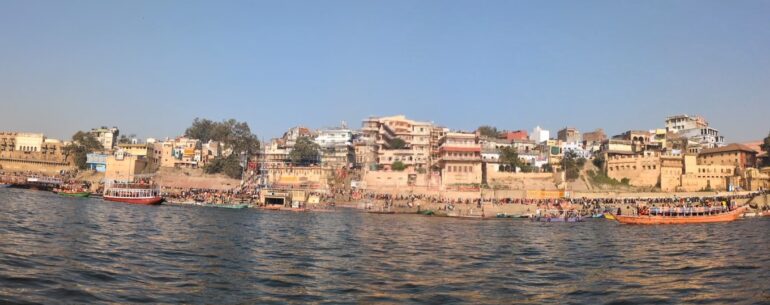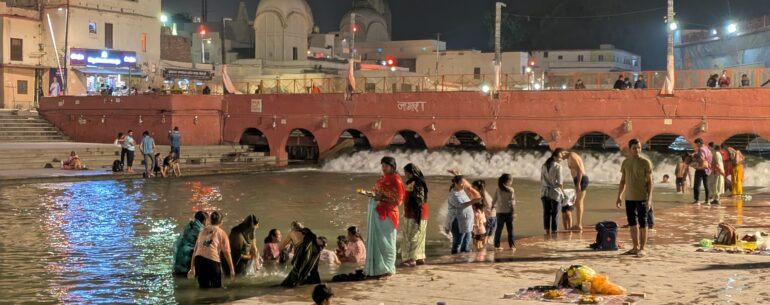All the key attractions in Jaipur can be covered in one day. But Jaipur is very touristy. Every place of tourist attractions is swarmed by vendors selling variety of stuff. I hired a guide twice, and each time, after the completion of the tour, I was led into shops where the owner/manager took lot of effort to clarify there is no obligation to buy anything and that they are sharing relevant knowledge so tourists do not get cheated. A very familiar scene that I have witnessed at multiple tourist spots all over the world.
Few attractions open till late evening
One of the good things about Jaipur is that some of the attractions are open in the evenings and are beautifully lit. It is worth driving around after sunset to watch some of these historical structures.
Amer(or Amber) Fort
The 16th century Amer fort is the main attraction and is located near the historic town of Amer, on the outskirts of Jaipur. Amer became famous because it was the home town of Jodha, the consort of Emperor Akbar. The viewpoint next to the lake Maota provides stunning views of both Jaigarh Fort and Amer Fort. The lake looked ordinary from the viewpoint but from the top, with a lush garden in the middle, it looked equally stunning.
Accessible by vehicle
Vehicles can drive all the way up through narrow village streets. You can also ride an elephant from near the view point to the top. But you will miss Panna Meena Ka Kund. If you wish to learn more about history and how the Fort was used, hire a guide. Costs about INR 300. Skip if you only wish to click few pictures and admire the Rajputana architecture.
Bit disappointing that none of the stuff used by the royals is left in the fort though there are few paintings here and there. The escape tunnel too was closed to visitors. But the fort itself is impressive, and so are the views from the top. And yes, one other thing I certainly liked was that the rest rooms were quite clean! So there was no need to be cautious sipping water.
Budget about 2 hours for both Kund and Amer Fort.
If you are keen on the sound and light show, visit in the evening hours. There is also an option to end the tour with lunch or dinner at 1135AD, advertised as opulent Maharaja’s dining room. I skipped as I had seen enough of opulence in Rambagh Palace!

View of Amer village from Amer fort, Jaipur, Rajasthan 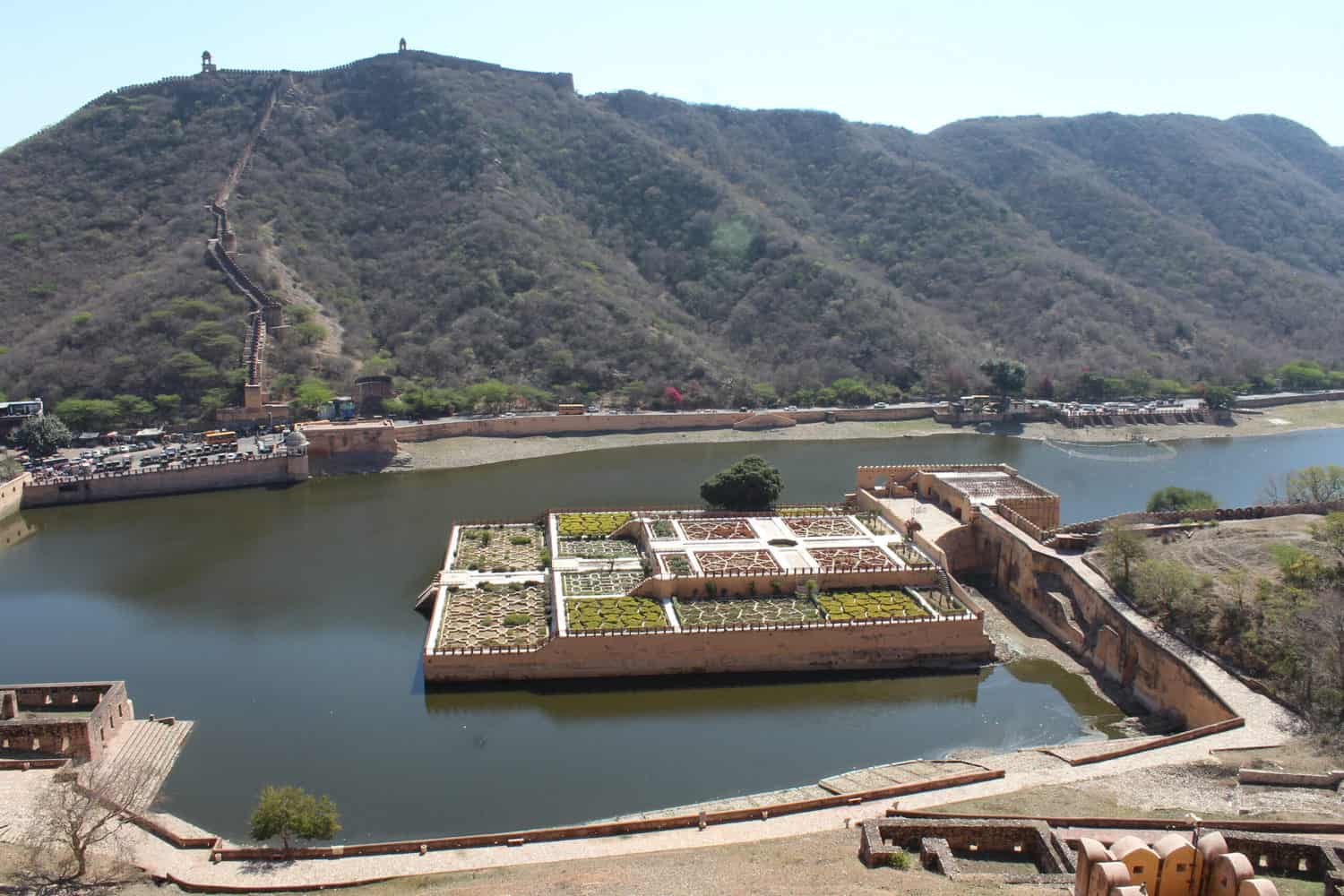
View of lake from Amer fort, Jaipur, Rajasthan 
Sheesh Mahal, Amer fort, Jaipur, Rajasthan 
Mirror work at Sheesh Mahal, Amer fort, Jaipur, Rajasthan 
The gate at Amer fort, Jaipur, Rajasthan
Panna Meena Ka Kund
A smallish step well on the way to Amer Fort. Step wells were a very fascinating innovation in the olden days to collect and store water in the desert climate of Rajasthan. If you do not have time to visit the massive Chand Baori (2 hours drive one way), don’t miss Panna Meena Ka Kund. For safety reasons, visitors are not allowed to climb down the steps but there is no barricade.

Panna Meena Ka Kund, Jaipur, Rajasthan 
Panna Meena Ka Kund, Jaipur, Rajasthan
Jantar Mantar
Among the five astronomical observatories built in the 18th century, the Jantar Mantar in Jaipur is the largest. There are several instrument clusters, made of stone and brass/copper, designed to capture the movement of the sun, indicate time, point location of North Star, predict eclipse and so on. It features the largest sun dial in the world(27 m). Though I understand the importance of astrology in India, I was still amazed to see a cluster of 12 small instrument enclosures(Rasivalayas Yantra), each representing the 12 Zodiac signs and designated as the place to draw horoscopes.
A guide is very useful here as otherwise, it is difficult to know what each instrument stood for. I paid INR 500 for a guide for both City Palace and Jantar Mantar. But there are descriptive plaques for each instrument for those who believe in DIY.

The smaller Sun Dial at Jantar Mantar, Jaipur, Rajasthan 
Rasivalayas Yantra, Jantar Mantar, Jaipur, Rajasthan 
Jantar Mantar, Jaipur, Rajasthan 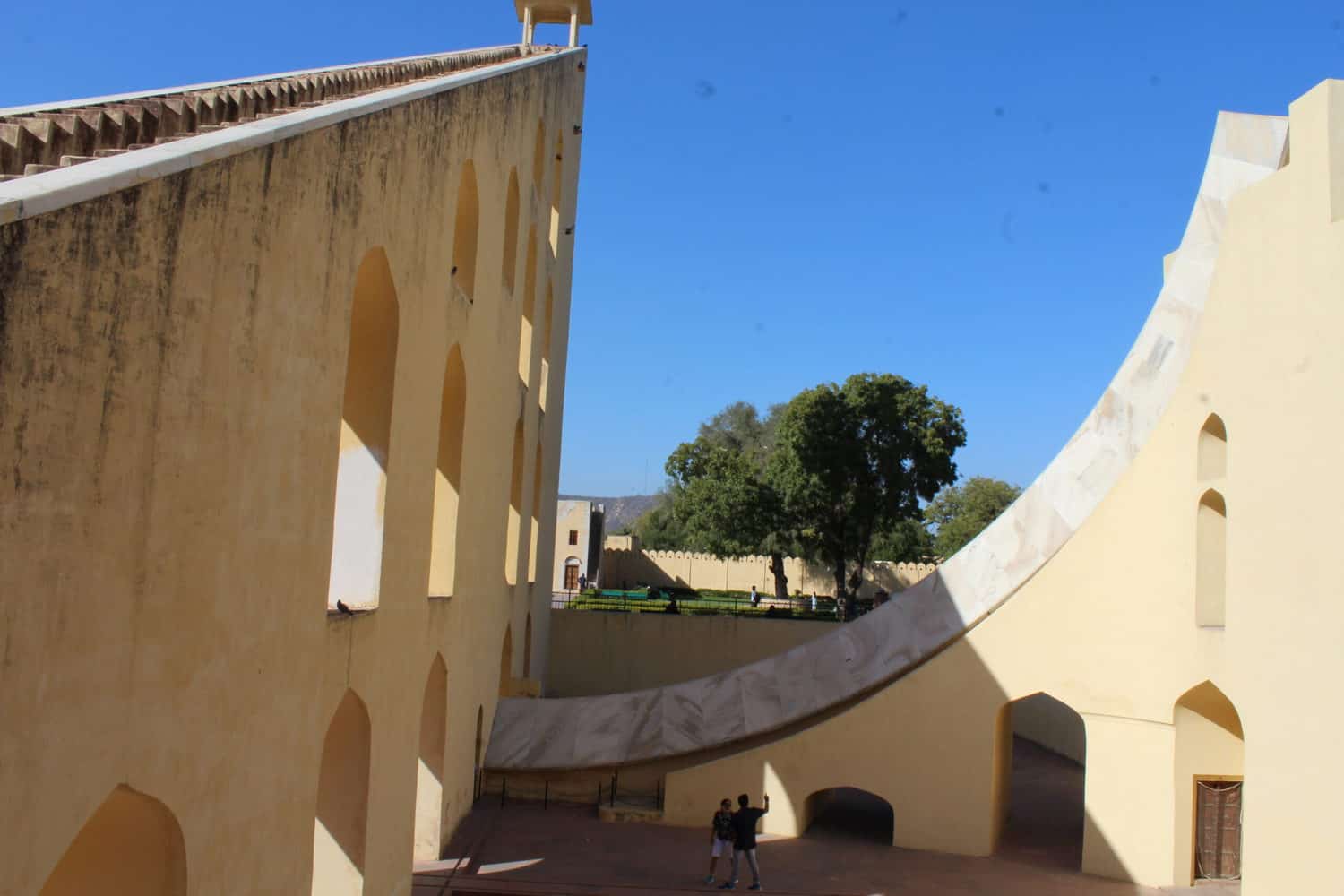
Shadow on arc indicating time, Jantar Mantar, Jaipur, Rajasthan
City Palace
Located next to Jantar Mantar, the royal family of Jaipur continues to live here and that may explain the slightly higher entry fee. It is INR 200 per person for courtyard plus museum and INR 3k per person for visiting inner areas of the palace. Having seen other palaces, I opted for the cheaper ticket. The key attraction here are the 2 huge silver vessels each with a height of 5.2ft., weight of 340Kgs and capacity to hold 4000 litres of water. The vessels were made to carry drinking water from river Ganga during the visit of Maharaja Madho Singh II to London in 1902. The Guiness Book recognises these two vessels as the largest item made from silver in the world.

Peacock Gate, City Palace, Jaipur, Rajasthan 
City Palace, Jaipur, Rajasthan
Other attractions
Jal Mahal – This 18th century palace is bang in the middle of a lake that was created due to building of a dam nearby in the 20th century that half submerged the palace. Again, the architecture is quite striking, which gets further accentuated by its location. The facility to get closer on boats was not available when I visited. Jal Mahal is located on way to Amer Fort.
Hawa Mahal – This exotic pink and red sandstone building is synonymus with Jaipur. The exterior is studded with 953 small windows that allowed free movement of wind. Lot of history attached but today, the reality is that it is adequate to click some pictures and admire the beauty from outside. There are rooms inside but nothing to see and the structure is about 5 stories tall. Sad part is that the area around Hawa Mahal is too crowded.
Hawa Mahal looks stunning under lights.
Albert Hall Museum – Originally envisaged as a concert hall, like the one in London, the 18th century museum’s Indo-Sarcenic architecture is striking. If you keen to view art, treasures and artifacts of 19th century, step in. Else just walk around on the outside.
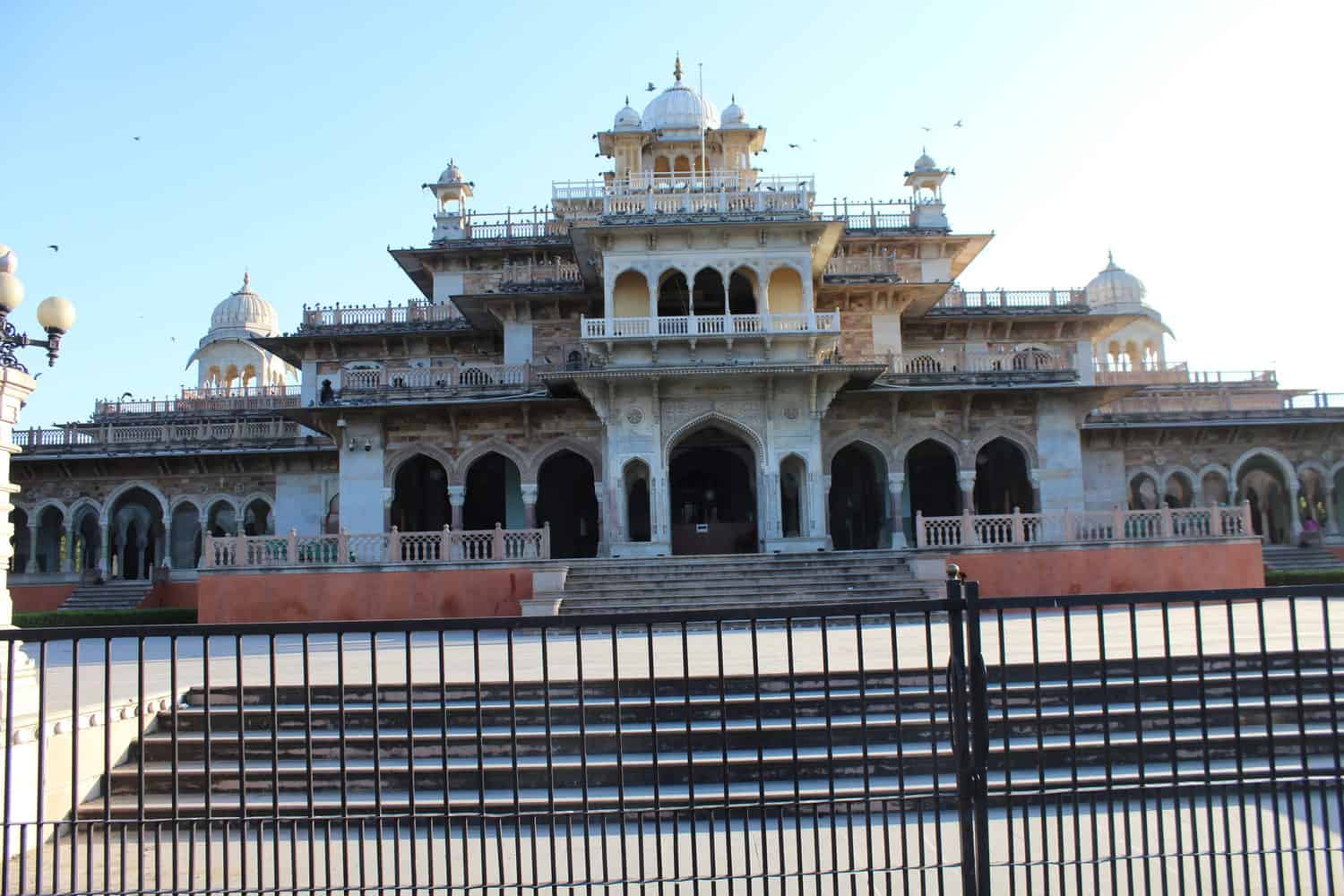
Albert Hall Museum, Jaipur, Rajasthan 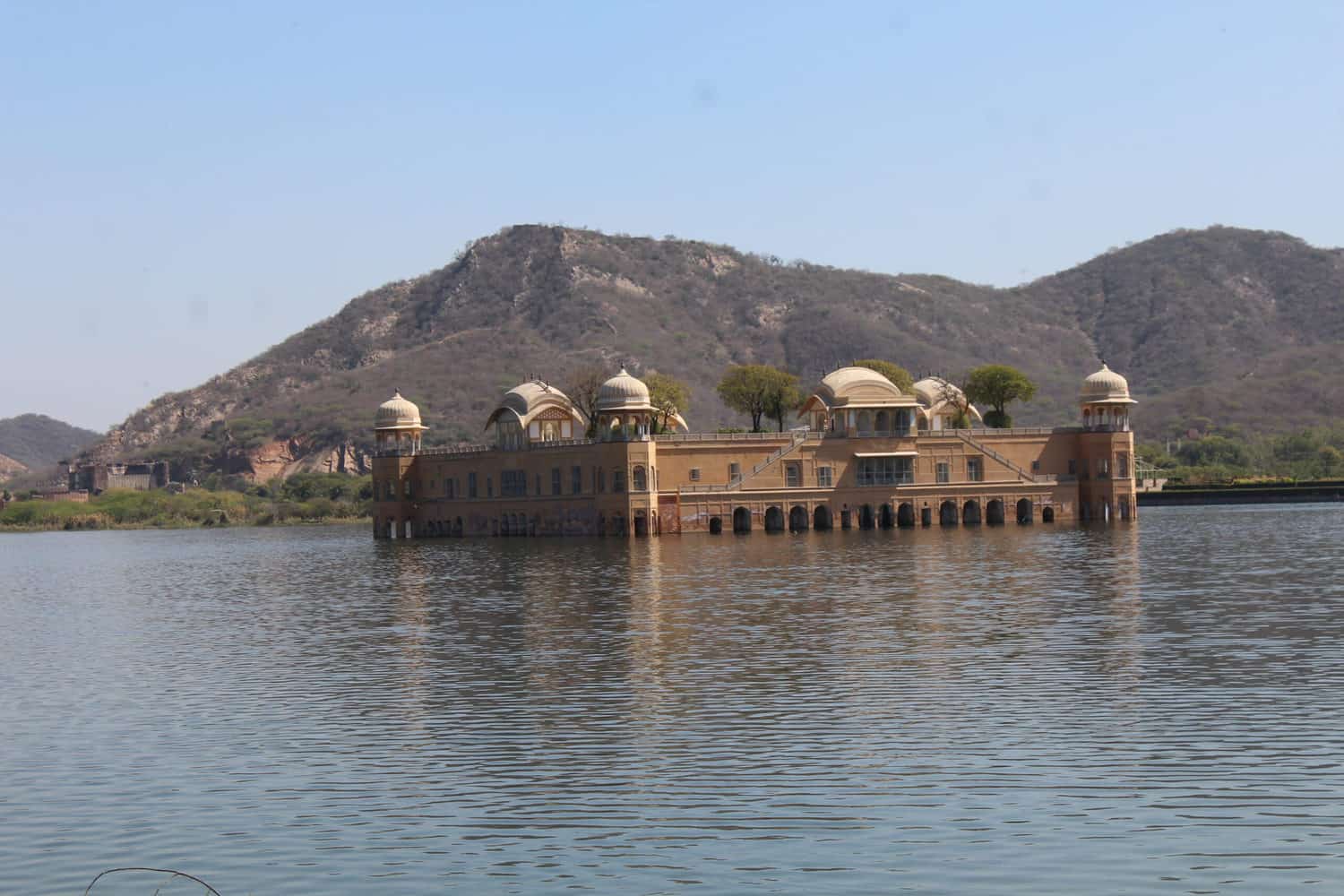
Jal Mahal, Jaipur, Rajasthan 
Amar Jawan Jyothi, Jaipur, Rajasthan 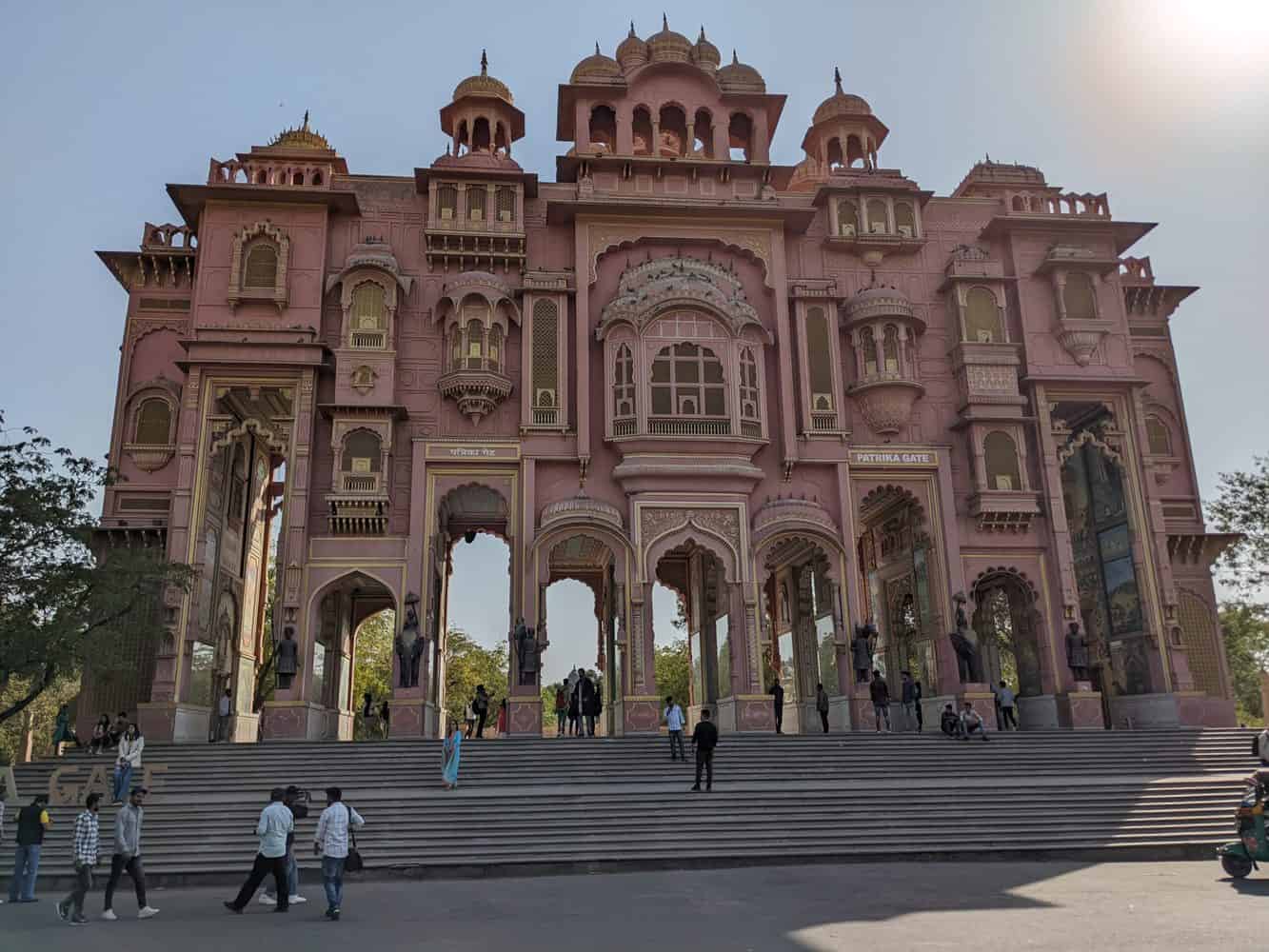
Patrika Gate, Jaipur, Rajasthan 
Hawa Mahal, Jaipur, Rajasthan
Other recommended places I chose to skip
Nahargarh fort – provide a panoramic view of the city.
Jaigarh Fort – great views of Amer Fort and the surrounding hills.
Temples such as Birla mandir, Galtaji, Akshardham, Jagat Shiromani amongst others. Galtaji is located away from the city.
Chokhi Dhani, an ethnic village near Jaipur, to enjoy traditional arts and culture, savour traditional food and shop for artefacts.

Jaigarh Fort, Jaipur, Rajasthan
What else?
Watch Horse polo
Jaipur is among the few places in India whore horse polo is played as a tradition started by the royal family. It was fun watching this offbeat sport at the Rambagh polo grounds, located next to Rambagh palace hotel. Though the matches last longer, I spent an enjoyable hour on Saturday evening.

Horse Polo, Jaipur, Rajasthan 
Horse Polo, Jaipur, Rajasthan
Fly in a hot air balloon
Jaipur happens to among the handful of places in India where hot air ballooning is offered. Having experienced ballooning in New Zealand, I was keen to give it a try in India. The pictures of balloon flying over the Jaipur forts was too exciting to not try this. But the end result was a huge disappointment. Read on to know why.
Leisure dining
Leisure dining is somewhat alien to Indians but Jaipur is one place where one can indulge in elaborate meals in an opulent setting, the way royals used to. Certainly worth the experiment. Best to choose erstwhile palaces or havelis converted to hotels. I chose to dine at Suvarna Mahal and Samode Haveli. Be prepared to spend ~ INR 10k on a vegetarian meal for a couple though without alcohol drinks, the cost will be much lower, especially at Samode Haveli.
If you are in a celebratory mode, choose ‘couple experiences’ that many such hotels provide. For example, Rambagh Palace Hotel provides spa sessions and private dinners. You can even open a champagne bottle in the hot air balloon, though that option works best for evening flights.

